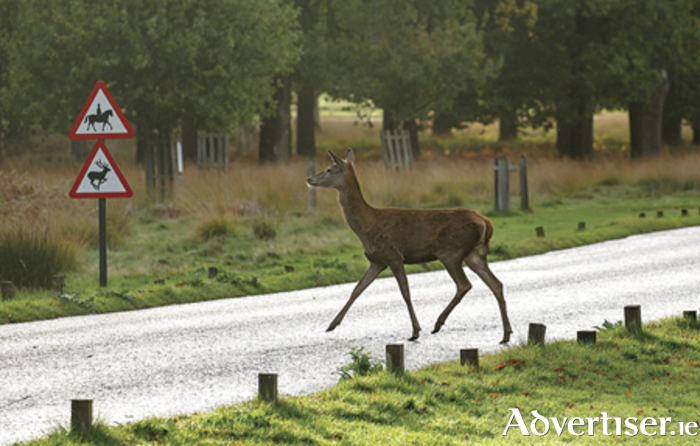Drivers should be on the lookout for deer on the roads in coming weeks as the nights close in and the mating season gets under way.
British breakdown organisation GEM Motoring Assist is warning drivers to be particularly cautious on road journeys at dawn and dusk, the times when deer are most active. Its advice is excellent and, of course, applies here in Ireland.
GEM says deer are more mobile than usual during October, with male deer chasing females across roads and increasing the risk of collisions.
Estimates from the RSPCA indicate that up to 74,000 deer are killed each year in road collisions, with an annual human death toll from deer collisions of between 10 and 20 and around 450 serious injuries. The total vehicle repair bill from deer collisions is estimated at more than £17 million.
“Woodland, parkland and hillside areas present the highest risks of a deer strike, but you should expect to encounter deer on any suburban or rural road.
“We endorse the advice provided by the British Deer Society - Deer Vehicle Collisions: don’t veer for deer, as by changing your direction quickly, you increase the risk of colliding with another vehicle or losing control, leaving the carriageway or going off the road.
“If you spot a deer or other animal on the road ahead, stay in control, reduce your speed as much as possible and steer straight,” GEM chief executive Neil Worth, stated.
The deer breeding season lasts until early November.
GEM offers six simple tips for drivers to reduce risk from deer collisions:
- Take note of deer warning signs. These are placed in locations where wild animal crossings are likely, so keep your speed down and be ready to encounter a deer at very short notice.
- Be particularly watchful at dawn and dusk, when deer are most active.
- If you spot one animal, it is likely there may be others following, so don’t speed up and assume the danger has passed.
- Remember the importance of always being able to stop – on your side of the road, but also be ready to react if a deer leaps out right in front of you.
- If a collision with the animal seems inevitable, then the safest option is to strike it while maintaining full control of your car. Always look out for traffic behind you. If you need to stop then use your hazard lights to warn other vehicles.
- If you hit a deer, or you come across an injured deer, stop somewhere safe and report the collision to the police, who can organise professional veterinary assistance.

